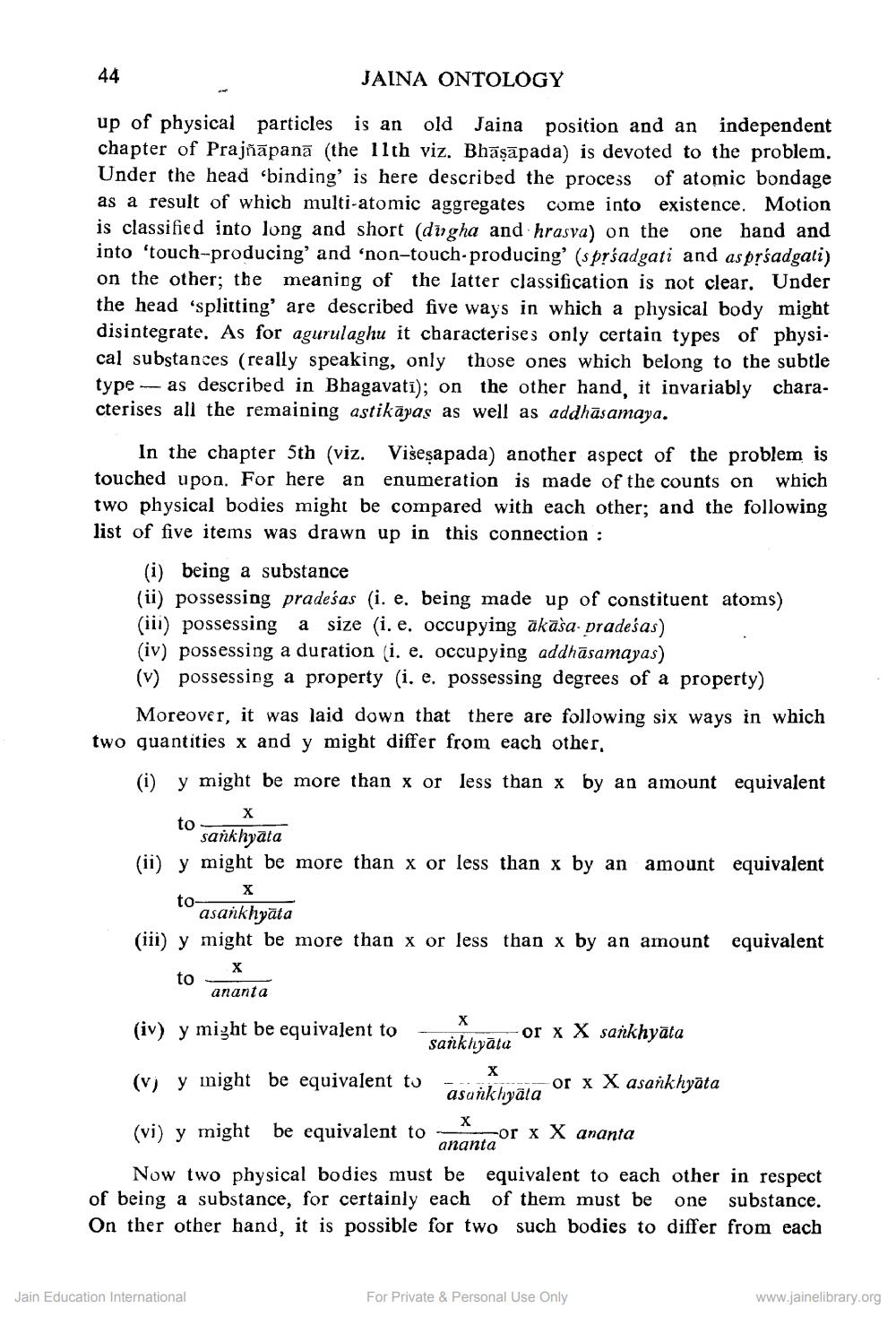________________
44
JAINA ONTOLOGY
up of physical particles is an old Jaina position and an independent chapter of Prajñāpanā (the 11th viz. Bhāṣāpada) is devoted to the problem. Under the head binding' is here described the process of atomic bondage as a result of which multi-atomic aggregates come into existence. Motion is classified into long and short (dirgha and hrasva) on the one hand and into 'touch-producing' and 'non-touch-producing' (s prsadgati and as prśadgali) on the other; the meaning of the latter classification is not clear. Under the head 'splitting' are described five ways in which a physical body might disintegrate. As for agurulaghu it characterises only certain types of physical substances (really speaking, only those ones which belong to the subtle type --- as described in Bhagavati); on the other hand, it invariably characterises all the remaining astikāyas as well as addhāsamaya.
In the chapter 5th (viz. Višeşapada) another aspect of the problem is touched upon. For here an enumeration is made of the counts on which two physical bodies might be compared with each other; and the following list of five items was drawn up in this connection :
(i) being a substance (ii) possessing pradeśas (i. e. being made up of constituent atoms) (iii) possessing a size (i. e. occupying akaša pradeśas) (iv) possessing a duration (i. e. occupying addhāsamayas) (v) possessing a property (i, e. possessing degrees of a property)
Moreover, it was laid down that there are following six ways in which two quantities x and y might differ from each other,
(i) y might be more than x or less than x by an amount equivalent
to
X
to sankhyata (ii) y might be more than x or less than x by an amount equivalent
"asankhyāta (iii) y might be more than x or less than x by an amount equivalent
to
to
ananta
(iv) y might be equivalent to
O
- Sankhvata or x X sankhyata
(v) y might be equivalent to
the or x X asankhyāta asunkhyāta
poor x X ananta
(vi) y might be equivalent to
Now two physical bodies must be equivalent to each other in respect of being a substance, for certainly each of them must be one substance. On ther other hand, it is possible for two such bodies to differ from each
Jain Education International
For Private & Personal Use Only
www.jainelibrary.org




